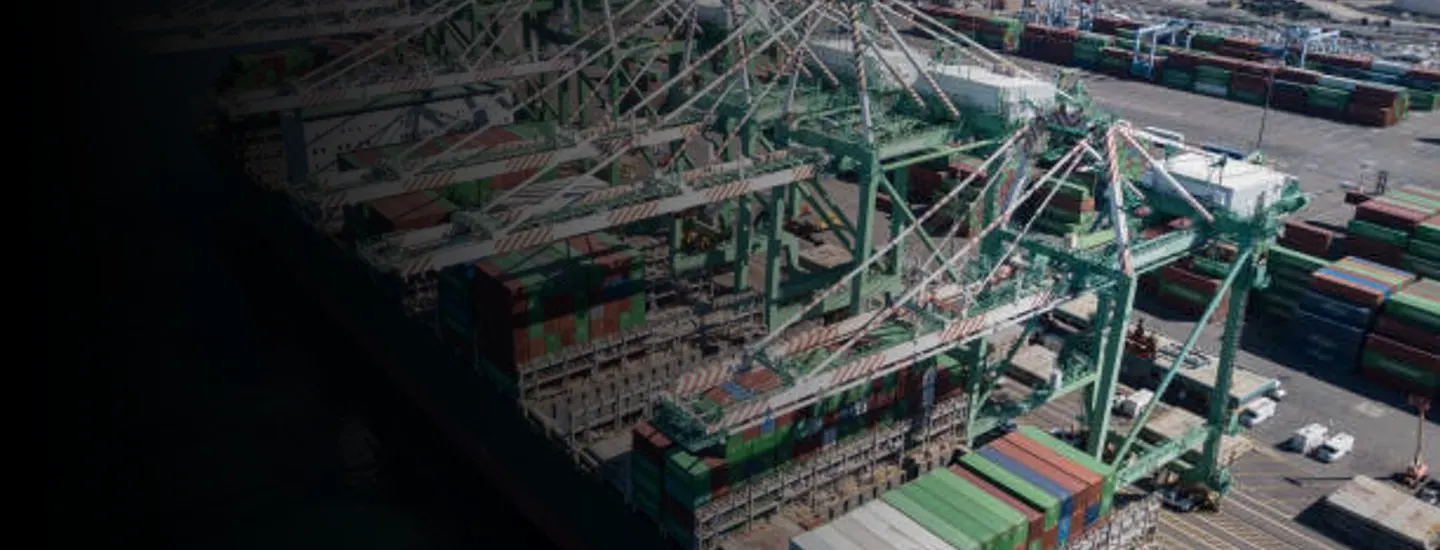Here’s an assignment: Think of a buzzy tech-industry concept (such as “Big Data”, “Internet of Things”, “Digital Twin”, or “Artificial Intelligence”). Now, imagine an industry most in need of the transformation that buzzword represents. Chances are that marine ports didn’t spring to mind.
Shipping bottlenecks remain a major hurdle to returning to business as usual, disrupting the economy. Port activity -- including labor shortages, a surge in demand for imports, container scarcity, and capacity constraints -- disproportionately kink global supply chains and fuel inflation.
There is no overnight fix, but tech-enabled “Smart Ports” can be an effective tool in building more resilient supply chains.
The technology exists to vastly improve accuracy, efficiency, and overall utilization of ports, while also reducing accidents, emissions, and reliance on human capital. Several broad trends are supporting this transition to Smart Ports. Global adoption of the necessary “smart” tools is increasing, in turn boosting scale and lowering the deployment costs/risks of next-generation tools. The Biden administration, meanwhile, emphasizes port development as a critical component of its infrastructure plan.
Addressing efficiency, environment, and competitiveness
A Smart Port utilizes shared and real-time data analytics to make decisions about business operations and traffic flow. Various IT resources and humans interlock to work together in enabling the evolution of a Smart Port, which require several stages of investment and development to fully activate.
Smart Ports are an example of the wider push to fully modernize established industries -- from factories to coal mines, warehouses to rail. Employing cutting-edge technology is often greeted skeptically by various stakeholders in old industries, but it is a necessary step toward modernization. Marine ports have lagged in the adoption of automated systems, IoT, big data analytics, and artificial intelligence.
Smart Port development was well underway in all major economies, including at a handful of major U.S. ports, well before the outbreak of COVID-19. The pandemic simply underscored the need to hasten this transition.
Growth is projected over the coming years, with some estimates forecasting a 24% CAGR for the Smart Port market through 2026. This boom will be fueled by operators looking to continue to run more efficiently, particularly amid labor shortages and a need to update outdated operating models. The congestion that snarled supply chains over the past 18 months needs a permanent solution.
Modernization will be supported by the Biden administration. It committed sizable portion of a roughly $1 trillion infrastructure plan to ports. The White House will address capacity limitations, but also strengthen “digital infrastructure.”
The United Nations has identified Smart Ports as a way to cut harmful emissions, improve air quality, minimize and recycle waste, and address the carbon footprint of up- and down-stream activities. This can satisfy investors, regulators, and other stakeholders closely monitoring ESG performance.
Blueprints exist
Developers won’t be innovating blind. Los Angeles is home to the biggest U.S. Smart Port, and one of the examples the U.N. cites as an effective benchmark for sustainable supply improvement. The port also built cyber-resilient systems to address security concerns raised by sharing of cargo shipping information.
The New Jersey Institute of Technology’s bid for the “Build Back Better Regional Challenge” is a signal of things to come. The proposed “Greater Newark Smart Port Regional Growth Cluster” project is a finalist for major federal funding. If greenlighted, the plan would accelerate supply chain activities and multiply local jobs by integrating machine learning and AI into port operations.
Here are the key trends associated with Smart Ports:
Port operations efficiency:
- Increasing capacity and productivity through digitally connected cargo handling.
- Enabling smart maintenance of equipment such as cranes, straddle carriers, and fork-lifts.
- Embracing IoT to enhance decision-making for various sector stakeholders.
- Using AI to identify, monitor, and aggregate environmental and regulatory data for compliance.
Traffic control and communication:
- Facilitating just-in-time for seaborne and intermodal arrivals via smart appointment systems.
- Implementing GPS-based traffic monitoring systems along major port roads.
- Using digital tools to provide timely notifications on sea and land near the port.
The way forward: People and process
An effective Smart Port strategy requires bringing many private sector stakeholders to the table. The federal government can broker in these conversations, but the stakeholders need to commit to consistency and innovation. Data must be shared across the ecosystem.
For example, this system can facilitate port efficiency if truckers, shipping lines, and cargo owners commit to dual transactions. In a dual transaction, every import delivered across state lines in a truck must be matched with an export or empty container waiting to be shipped. Common communication platforms and protocols need to be established to support this.
Labor must also come to the table. After dark, longshoremen, truckers, and warehouse workers, for example, are required to accept deliveries from container ships outside of peak hours. There also needs to be workforce recruitment for supply chains. A port's operation depends on three types of workers: truck drivers, longshoremen, and warehouse workers, yet attrition in the supply chain is causing productivity to be lost in many cases.
The global shipping industry will continue making progress with Smart Ports, and with this transformation comes the promise of increased productivity, efficiency, sustainability, and profitability. It can serve as a core for developing an eco-friendly, low-carbon shipping system. U.S. ports are not currently leading this evolution, so it’s past time to rethink that strategy.

